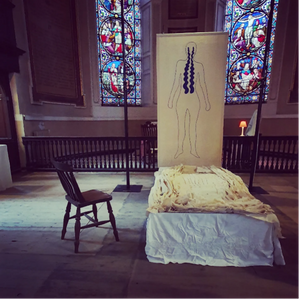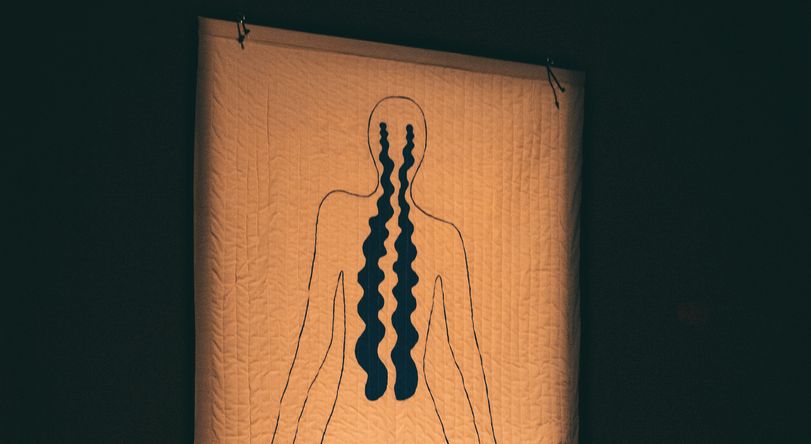A Place For Grief
Grief is both deeply personal and yet universal. We will all experience it sometime in our lives but the way we cope with it is different for us all. When my dad died, even though it was expected as we’d been told that he wouldn’t survive his diagnosis of Leukaemia, I, along with my mum and sister, was thrown into this vortex of organising and tying up loose ends. It was such a shock to the system, on top of the loss of dad, who was also my best mate, giver of confidence, all knowing, big brained smiling Irishman. Gone.

I thought that we’d have a peaceful, if sorrowful, time of quiet contemplation before saying that final goodbye at his funeral. This couldn’t have been further from the truth. Phone calls to Funeral Directors, meetings with Funeral Directors, waiting for news from the Coroner’s Office (dad died at home), informing my kids that Grandad had gone, telling friends and family, receiving visitors, choosing the coffin, the colour of satin inside the coffin (not green for dad’s Irish roots. Undertakers don’t like green. It’s apparently back luck), how many cars, who to invite, where to go afterwards, booking the crematorium, phoning the bank, registering his death. Not forgetting making sure mum was ok, and LOTS of tears. It was relentless.
I wished that someone had warned me, but in our life it was not something we really spoke about in that level of detail. There’s a reason why you hear the phrase “Us Brits are not known for being very open about death and dying” and that’s because generally it has been true. I think, through recent enforced circumstances, we’re getting better at it, and especially with movements like The Good Grief Project, but we still have a long way to go. The pandemic has literally isolated many of us even further and has shone a cruel spotlight on the matter of dying. With lockdowns, we have been unable to attend funerals, and worse, so many have been unable to spend physical time with loved ones to have their last hugs and say their goodbyes.
I’m working on a project to regenerate a redundant medieval church in Suffolk and one of the interpretation strands I’m working on is around Rites of Passage, and of course dying and grief is a major part of this. With that in mind, I grasped the invitation to visit Lancaster to experience the art installation called A Place For Grief which was taking place at St John The Evangelist, redundant church; now in the care of the Churches Conservation Trust.

I arrived at the church, which is an impressive Georgian building in the heart of Lancaster, on one of those semi-grey days that is too warm for a coat, but always threatens rain. There was no activity outside; just a sign on the gate, and a single volunteer waiting to be let in. There were lights on inside though, which was a good sign. On my way, I’d walked past a very sorry looking boarded up church close by, and could only wonder what it was like inside. At least there were signs of life here. The doors of St John opened, and we were warmly greeted by Alice Booth, Creative Producer from Lancaster Arts. By now, a handful of young women had arrived, and a solitary young man. Later on another man would arrive, just because he’d never been inside before and was delighted to find it open, curious about what he'd find.
Inside, the church took my breath away. The dust hanging in the air, dancing with the light coming through the windows, floating across the dark wooden pews, must have been close to how it was 200 years ago. All the noise and rush of the intersecting roads outside dropped away. It was peaceful and mesmerising, and very fitting for A Place For Grief.
Alice gave us some simple instructions on how to listen to the audio segments of the installation, just using our phones, and headphones, and a QR code reader app. Then, quietly walking down the aisle to the chancel, towards the altar, and the smaller chapel to the side of the chancel, there was the artwork. Large textile sheets hanging in frames, each with a life size body form painted onto it, with different strange symbols on each one, representing grief maps. It was almost like discovering an ancient tomb, filled with ritualistic relics from the past.
I’m not going to give too much away because I really hope that many people will have the opportunity to experience this moving interactive work of art, but as instructed, I pointed my phone at the first QR code and the voice of the artist, Fabiola Santana, began. She has the gentlest voice, and immediately everyone else there seemed to fade away as I listened to her telling her story. She invited me to move from one area of the installation to the next. At each area there was a further invitation to interact; write on a ribbon, write on a card, contemplate, learn, sit in a comfortable chair, take part in small personal rituals. It was beautiful and very moving, and gave an overall feeling of peace, interspersed, for me, with some valuable moments of self-reflection within the

context of other people’s stories.
I was pleasantly surprised that grief wasn’t just addressed in the context of the loss of a person; loss of place was also illustrated. The fact that this installation was in a disused church felt entirely relevant and appropriate. Whatever your beliefs, there is something about an old church for many people that is special; spiritual one way or another. I am not a church goer, but of course I’ve attended christenings, weddings, and funerals, so by association I do feel an emotional connection to the buildings themselves. I also think about all the skilled people that helped to build them, and the thousands of people that must have stepped over the threshold over the years for the very same reasons as me. So, when no longer used for religious purposes, it feels entirely right that they be repurposed for other ways, like this, for people to come together to connect with each other. This installation was a perfect example of this in action. All of us there were, at the same time, experiencing something very personal, but together in this beautiful space, and this was very soothing. It felt shared and safe.
I came away with a beautiful booklet that accompanied A Place for Grief, which invites you to create your own version of a grief map. I am in the process of doing mine now. I won’t ever put my own grief for my dad to rest because it’s an important emotional connection when physically he’s no longer here. There is no suggestion at all that this could or should be an outcome of visiting A Place For Grief, but for me personally there is great comfort in hearing stories of loss from other people and perspectives. I didn’t walk away feeling sad. I felt thoughtful, connected to others and now have a connection to a new old place that I never would have imagined.
To learn more about A Place For Grief visit Fabiola Santana’s website www.fabiolasantana.co.uk

